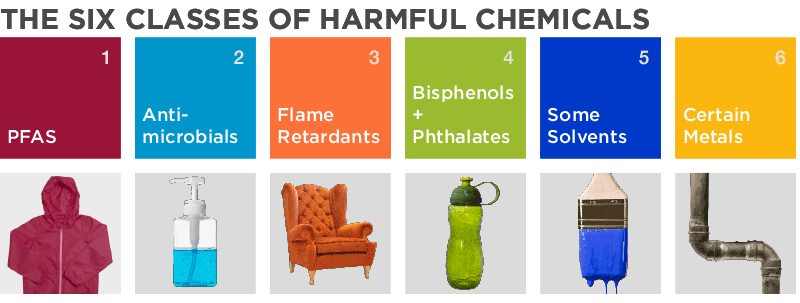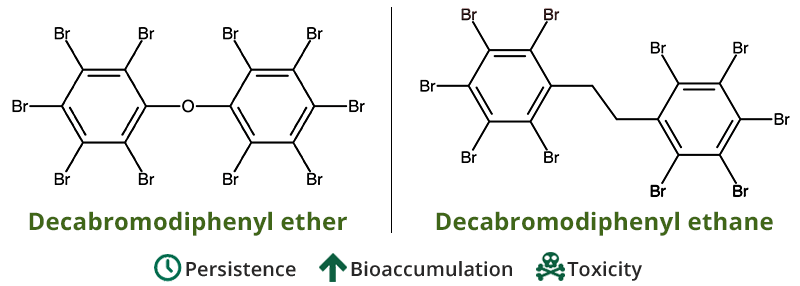Class Concept
“The only possible practical approach for a set of chemicals as large as the organohalogen flame retardants is a class approach.”–National Academy of Science Advisory Committee
The class concept
Over 40,000 chemicals are used in commerce. Less than 10% have been studied for human health effects. Many chemicals of concern can be grouped into just Six Classes:

Rather than evaluating chemicals one at a time, the class approach allows efficient decision making based on entire groups of chemicals. The class concept can help businesses, scientists, and policymakers to better understand the properties of these chemicals, where they are used, and how they can be avoided.
Regrettable substitutions

Applying the class concept can prevent “regrettable substitutions,” in which harmful chemicals are phased out only to be replaced with related substances. Since similar chemicals can have similar potential for harm, we should avoid this game of “toxic whack-a-mole.”
Implementing the “class concept”
In 2017 the U.S. Consumer Product Safety Commission granted our joint petition to ban the class of organohalogen flame retardants in certain products. The National Academy of Sciences Advisory Committee studying the petition affirmed the class concept in 2019, stating that, “The only possible practical approach for a set of chemicals as large as the organohalogen flame retardants is a class approach.”
The European Union has done the same, banning organohalogen flame retardants in electronic display cases and stands, effective starting in 2021.
Retailers such as IKEA have adopted the class approach through voluntary phase outs of PFAS, flame retardants, and heavy metals.
Also, over 20 U.S. states in are regulating the entire class of PFAS in a wide variety of product categories.
Is it necessary? Is it worth it? Are there safer alternatives?
Some of the chemicals in these classes serve useful functions. By asking a few questions, we can limit them to essential applications and greatly reduce harm.
Is it necessary?

Some toxic chemicals are unnecessary. For instance, given that soap itself is more effective than antimicrobial chemicals for handwashing, antimicrobials shouldn't be used for general handwashing.
Performance can often be achieved without using harmful chemicals. For example, by stopping fires with smolder-resistant fabrics, we can prevent the need for flame retardants in furniture foam.
Is the function worth it?
PFAS can make a carpet stain resistant, but could cause long-term health harms to a crawling baby. Does the function merit the risk?
Are there safer alternatives?
Harmful chemicals can often be replaced by alternative materials or designs. For instance, glass or stainless steel water bottles are a better choice than plastics, which can contain bisphenols and phthalates.
SixClasses.Org
Watch our engaging four-minute videos to learn more about avoiding chemical classes of concern.